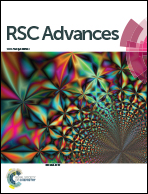Sulfur-inserted polymer-anchored edge exfoliated graphite for durable positive electrodes for lithium–sulfur batteries†
Abstract
Lithium–sulfur batteries hold promising potential for next-generation high-energy-density energy storage. One of their major technical problems is the sulfur active material loss and significant volume change during the charge–discharge process, resulting in rapid capacity fading. Here, we propose sulfur-inserted polymer-anchored edge exfoliated graphite as a positive electrode to accommodate the conflicting requirement of physically restraining sulfur dissolution while maintaining structural flexibility to cope with the volume expansion. The introduction of sulfur between the flexible polymer-anchored graphene layers is achieved by a simple chemical reaction at ambient temperature. The obtained sulfur–carbon composite demonstrates superior sulfur efficiency and cyclability compared to mesoporous carbon-based counterparts. The strong interfacial attraction between sulfur and highly-conductive graphene sheets at the confined interlayer space enables rapid charge transfer and effectively inhibits the polysulfide dissolution, resulting in improved redox reaction reversibility and sulfur efficiency. More importantly, the structural flexibility of layered structure, derived from polymer-anchor, guarantees the stable cycling by accommodating the significant volume expansion of sulfur active materials. Our work provides a simple, proof-of-concept strategy for improving the overall performance of carbon-based positive electrode for Li–S batteries.



 Please wait while we load your content...
Please wait while we load your content...